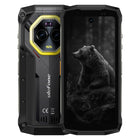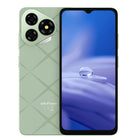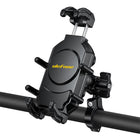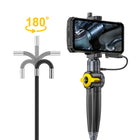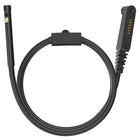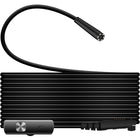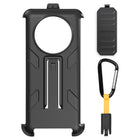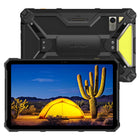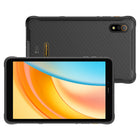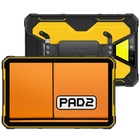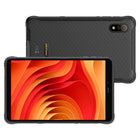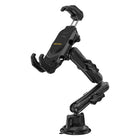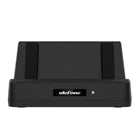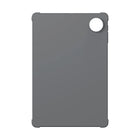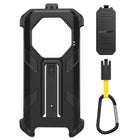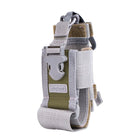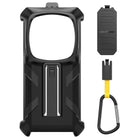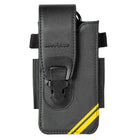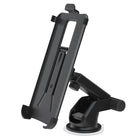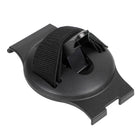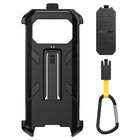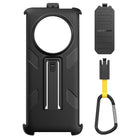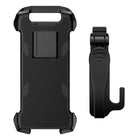Thermal Camera Applications Veterinary
Veterinary Thermal Camera Applications
Thermal imaging systems adapted for use in veterinary testing enable animals to be tested without the need to carry out exploratory surgery or other procedures. The thermal camera can detect hot/cold spots in the animal's joints, veins and skin to detect problems and can be used to make quick diagnosis on such things as arthritis. They are also commonly deployed in testing horses for injuries.
As the technology behind thermal cameras evolves and makes purchasing a camera more affordable than ever, the list of applications where the cameras can be used continues to grow. Thermal imaging systems are rapidly becoming much more commonplace in use as medical instruments due to their abilities to detect problematic thermal hotspots, and this use also applies to veterinary applications where the vet can use a thermal camera to analyse an animals' heat and spot potential problems.
How exactly are thermal imaging systems deployed in evaluating animals though? How can a camera spot a problem that might have otherwise went unnoticed? In order to understand these questions you first need to understand the basic principles of how a thermal imaging system works.
Thermal Cameras: The Basics
What is a thermal imaging camera? The explanation isn't quite as complex as you might think. Thermal imaging systems function in similar ways to conventional cameras and are used to capture an image of an environment/application. The major difference between conventional cameras and thermal cameras lies in their method of detection; normal cameras use normal, visible light to construct an image, whereas a thermal imaging system utilises IR (infrared) light to form an image.
IR light is all around us constantly. Usually expressed via IR radiation, everything from our own bodies to animals and appliances outputs some form of IR radiation. It's completely invisible to human eyes due to it being outside the visible light spectrum, but a thermal camera is able to pick up on the IR radiation given off by objects (also known as 'emissivity') and convert this data via complex algorithms and machinery into a thermal image.
A thermal image is therefore a map of the emissivity of objects captured by the image. In more basic terms, everything that could be seen when the image is captured is shown as a temperature via the use of various colours. Hotter areas are generally red/whiter in colouring, while colder areas are purple/blue in colouring. Every single pixel in the image is assigned a thermal reading when the thermal camera captures the image, so the more pixels available on the camera in question, the wider the possibilities of capturing more precise thermal data.
So why do we use this technology? What purpose does capturing the world as a thermal image actually serve? There are literally thousands of applications why this technology is useful, ranging from everything from spotting excessive electrical output in components to assessing buildings for draughts or insulation leakage.
They're also becoming increasingly more common in the veterinary industry and the next section of this article explores exactly why this is the case.
Equine Thermography
This method of testing is much more effective than other types of testing that may cause distress to the horse and potentially miss problems that might become a bigger problem in the future if left untreated.
Hot and cold spots detected on the horse's body may be a precursor to injuries; hot spots generally mean there is an area of inflamation or increased circulation, while a cold spot usually shows that there has been a reduction in blood flow due to the effects of swelling, thrombosis or scar tissue. It is also worth noting that several other factors can cause these hotspots/coldspots to form and they may not be a sign of injury. Known as 'artifacts', bandages, liniments or other treatment options can cause increased heat on the body and thus have to be taken into consideration when carrying out thermal surveys.
Detection of Inflammation
Inflammation in the body of a horse can remain hidden for up to two weeks before the horse shows any sign of the damage visibly. A thermal camera is able to pick up on the inflamation long before the animal starts to favour its legs, allowing more effective treatment to be planned and the animal's body to heal at a much more efficient rate.
The thermal imager is able to pick up on areas where the animal might react to soreness, or can show increased blood flow areas which may be a precursor to inflammation. Many times the animal will show no signs of pain in these areas, but the inflammatory problems could easily be present without the animal knowing about it at the specific time of testing.
It is recommended horses are checked regularly for these problems as inflammatory pain can be extemely distressing for the animal and cause problems with movement if left untreated.
Muscle Injury Diagnosis & Nerve Damage
Areas of detecting inflammation around a muscle group can show problematic things with muscles long before they become apparent as an actual injury. Known as muscle atrophy, this is detected by a consistent decrease in circulation when compared to the other side of the muscle group.
Similarly damage to nerves as a result of disease or forced trauma can affect the blood flow and can be detected using thermal imaging systems.
Thermal Camera Evaluations of Other Animals
All of these evaluations are also applicable to other animals and can be used to test common household pets such as cats and dogs.
Thermal Cameras for Use by Vets
Now that you've learned all about how thermal cameras can be beneficial, its time to learn more about specific thermal cameras that can be used in veterinary applications.
Higher specification thermal imaging systems are generally more suited for use by vets as these are able to measure over a wider measurement range and can pinpoint problems much easier than using lower grade models.
The following section outlines some recommended thermal cameras for veterinary applications.
*Products with Thermal Imaging:
Armor 27T pro,Armor 25T Pro,Armor 25T, Power Armor 18T Ultra, Power Armor 19T, Power Armor 18T, Armor 11T 5G, Armor 9.







